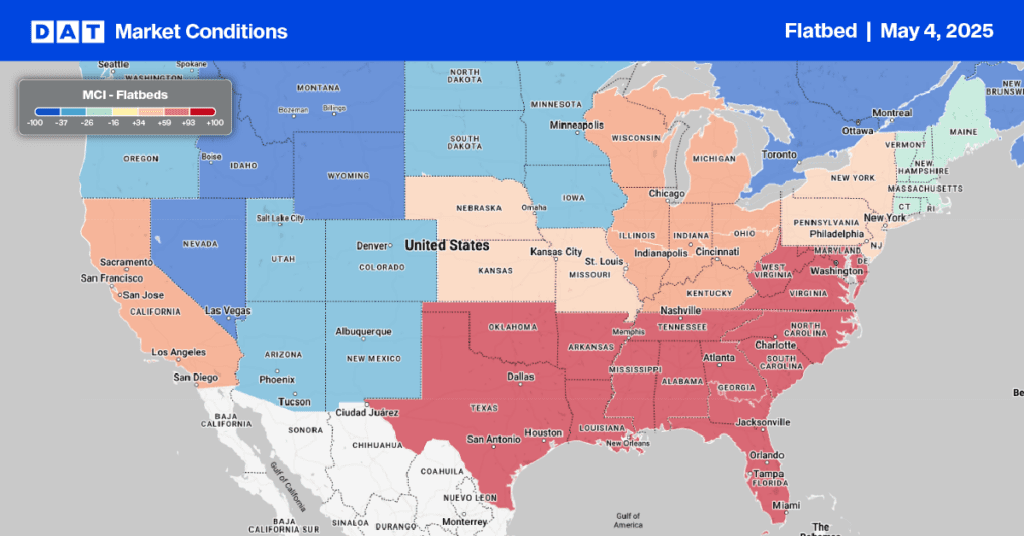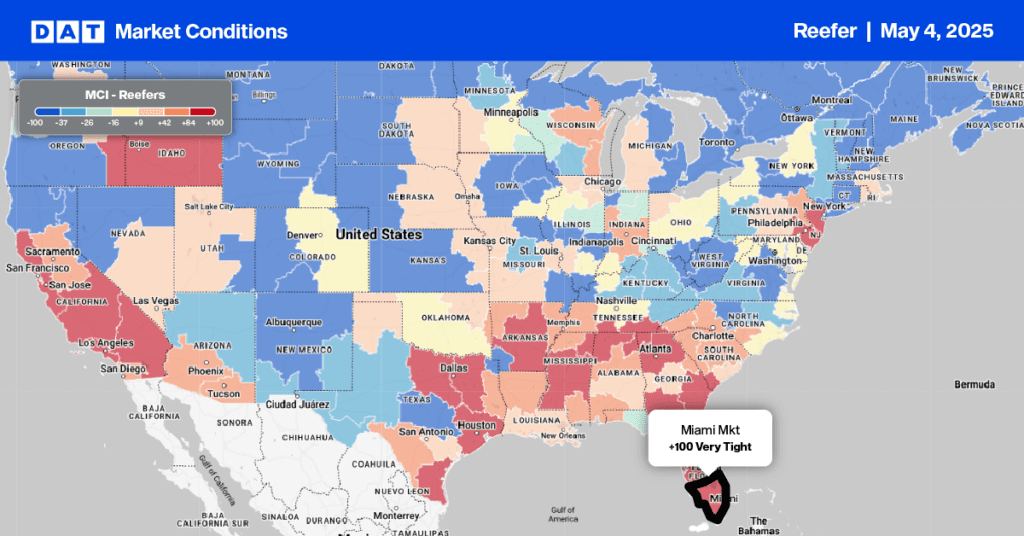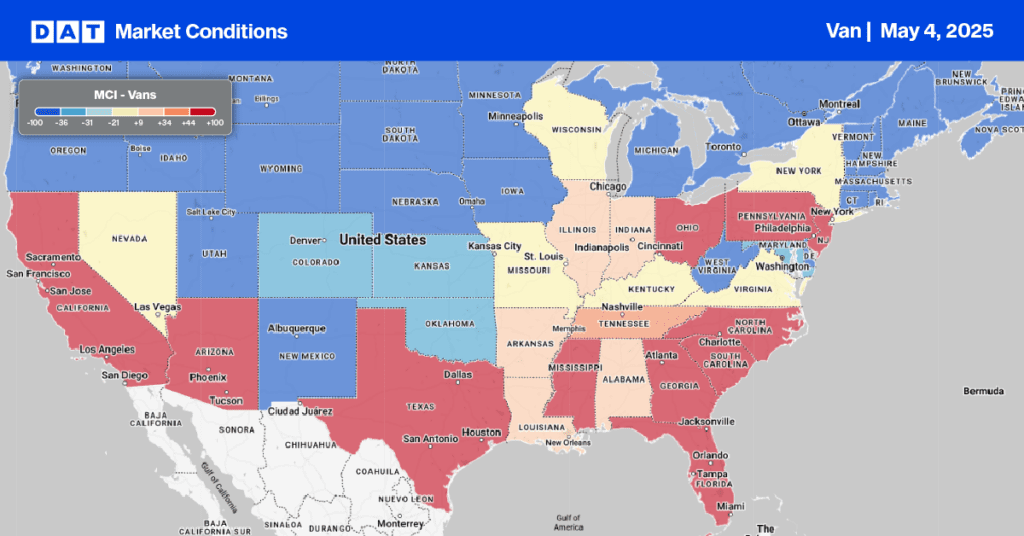What would you give to know you’re spending the right amount to move goods and eliminate all the guesswork? The market has shifted, and shippers have more leverage than they’ve had through the pandemic. Now is the time to optimize your spend so you can reap all the benefits of the recent market turn. Moving quickly with informed decisions in this market could bring huge business growth.
But the question remains: How do you know what the current market prices are?
Before we show you, let’s talk about the market we’re in.
Market context
With more capacity available, shippers have regained a bit of leverage in negotiations. We called this out in our most recent Signal Report, saying, “Shippers should continue to take advantage of the inverted market to secure lower contract rates, but also to shift more loads away from the routing guide (after meeting carrier commitments) to leverage the spot market. We believe that the trend of using a mix of contract and strategic spot rates will continue beyond the current soft market.”
Other key players in the industry agree. Take a look at how FreightWaves characterizes the current shippers market (emphasis ours):
“Due to retail sales, manufacturing output, and imports decreasing in Q4, freight demand continued to contract across the board and created a softer market in Q1. This softness is expected to persist throughout 2023 — but the market will inevitably turn tighter, making now the perfect opportunity for shippers to plan for the next market cycle…
Shippers should integrate key operational and technology changes in the slower market now instead of in the heat of a tight market later…”
The Wall Street Journal echoes these sentiments (emphasis ours):
“The impact is cascading across U.S. domestic supply chains, dimming cargo volumes for trucking companies and railroads. It is also bringing down the hefty freight rates that have crashed companies’ transportation budgets over the past two years, presenting an opportunity to cut logistics costs for those retailers and manufacturers that are looking to move goods…
DAT Solutions LLC, a load board matching shipments and trucks in the U.S. spot market, says loads posted to its load board were down about52% year-over-year in October and average rates were down nearly 16% from last year. The average rate of $2.37 per mile that the company measured in early November would mark the lowest price for shipping goods by truckload since September 2020…
A freight market marked by diminishing demand and lower prices will present opportunities for shipping customers to get their logistics budgets back in order, assuming, of course, that underlying demand from consumers and factories holds up.”
Here’s the gist of it: The market is yours for the taking. To do that, you need to benchmark your performance by comparing your freight costs to the market as a whole. Even as you’re adjusting spend based on the market, you’ll still be able to keep your carriers happy – benchmark analytics make sure your spend is in that “goldilocks zone” where everyone wins.
In doing so, you’ll add predictability and flexibility to your transportation planning. You’ll be able to identify carriers and lanes that are underperforming, reduce RFP timelines, and see where your network is most at risk for unexpected spot market exposure.
Knowledge and certainty are your best friends when the market is in your favor. Not taking action now could be a mistake.
Proactivity is your secret weapon
Old ways of doing things may not carry you through this new market. A bit of proactivity can go a long way here. Older ways of operating could fall short in a number of ways.
Shippers that only use their internal data lose sight of the market as a whole, and they rely on RFPs to take the temperature of the market instead of holistic market data. Verified third-party data fosters transparent negotiations, as there is a single source of information both parties share. As such, contracts can be evaluated in relation to the market as a whole, not just on internal data.
Benchmark analytics negates these pitfalls. It gives transparency so that negotiations happen in good faith – they see your market-based rationale and understand what your RFP is based on. Additionally, your own internal data can be checked against the market as a whole, opening up opportunities for refinement and precision with decision making.
DAT iQ can lend a hand
Benchmark Analytics from DAT iQ will be your best friend in this market. With it, you’ll be able to compare your network against hundreds of the country’s top shippers. We’ve taken over $35B in annualized shipper transportation spend, organized it, and flipped it into actionable insights for your business.
In a market that already favors you, take it to the next level with competitive intelligence that points you toward strengths, areas for improvement, and ways to optimize your operation.
With DAT iQ, you’ll be able to:
- View carriers, lanes, and segments that are underperforming compared to your historical data and the market as a whole
- Focus transportation procurement efforts on lanes and carriers that will save money and improve service
- Understand market trends and seasonal shifts to inform budgeting strategy
- See lanes where you’re going to the spot market most to mitigate risks to your transportation budget
- Report to key stakeholders with intuitive, pre-built tables, charts, and visualizations, with powerful segmenting by lane, carrier, business unit, industry, and more
Ready to take advantage of the market?
The time is right for your business to flourish. After years of drawing the short stick, you’re more poised than ever to make back those losses. With good data and sound strategy, you’ll make up the difference in no time.
Benchmark analytics from DAT iQ give you competitive intelligence insights to make the work easier. See how you perform against your competitors, and create an effective reporting structure quickly.
Ready to earn that money back? Click here to get started.



